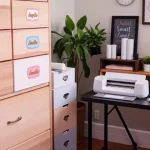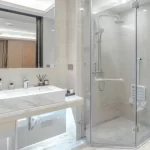How to build a foldable workbench is a smart solution for anyone working in a small garage or compact home workshop.
When space is tight, having a surface you can fold and store makes all the difference in maintaining order and flexibility.
A foldable workbench gives you the stability of a full workstation without taking up permanent room in your environment.
This project is ideal for beginners who want to build something useful, functional, and tailored to their available space.
In this guide, you’ll learn how to build your own foldable workbench step by step while making it strong, safe, and built to last.
Why Choose a Foldable Workbench?
A foldable workbench offers several advantages for small workshops or multi-use spaces:
- Space Efficiency: Easily folds away when not in use, maximizing floor space in garages, basements, or small apartments.
- Portability: Unlike built-in workbenches, foldable models are more flexible, especially for renters or shared spaces.
- Multi-Purpose Functionality: Can be adapted for woodworking, repairs, crafting, or even temporary desk use.
- Custom Fit: DIY construction allows you to adjust measurements, materials, and features to meet your exact needs.
Materials and Tools You’ll Need
Before starting, ensure you have the following materials and tools ready to avoid interruptions during the build.
Materials:
- 1 sheet of plywood or MDF (3/4 inch thick) – tabletop surface
- 2×4 lumber – for framing and legs
- Heavy-duty door-style hinges
- Folding shelf brackets or locking metal support brackets
- Wood screws (various lengths)
- Wood glue (for extra hold)
- Sandpaper or an orbital sander
- Protective wood stain, polyurethane, or paint (optional)
Tools:
- Circular saw or handsaw
- Power drill and drill bits
- Screwdriver or impact driver
- Measuring tape
- Carpenter’s square
- Spirit level
- Clamps (optional but useful)
Planning and Design Considerations
Before cutting any wood, think about how and where you’ll mount the bench. A good design plan saves time and helps avoid costly errors.
- Dimensions: A typical tabletop is 36″ x 24″, but measure your wall space before finalizing.
- Height: Aim for 34″ to 36″ depending on your comfort and project needs.
- Mounting Type: This guide assumes a wall-mounted version. Ensure your wall can support weight and use a stud finder to locate mounting points.
- Weight Capacity: Consider the types of tools or materials you’ll use. For heavier usage, reinforce both the tabletop and the wall-mounting system.
Sketch the full layout with measurements before making any cuts.
Step-by-Step Build Instructions
Step 1: Cut the Wood
Cut the plywood to size for your tabletop. Use a circular saw and straight edge for precision. Then cut your 2x4s to frame the tabletop and form the folding legs.
Step 2: Assemble the Tabletop Frame
Lay the plywood flat and attach the 2×4 framing around the perimeter using wood glue and screws. This not only reinforces the tabletop but also helps prevent warping over time. For added strength, you can place cross supports under the tabletop.
Step 3: Install Wall Hinges
Secure the hinges to the back edge of the frame, then attach them to the wall studs. Always mount into solid studs — never drywall alone. Use a level to ensure the tabletop will sit flush when open.
Step 4: Build and Attach Folding Legs
Measure and cut two 2x4s for the legs, matching the final table height. Attach them with hinges to the inside edge of the frame so they can fold flat when not in use. You may add cross braces between the legs for improved stability.
Step 5: Add Support Brackets
Install locking folding brackets on both sides of the workbench. These brackets will support the bench when in use and fold down with it. Double-check that they lock securely when extended.
Step 6: Sand and Finish
Use sandpaper or a sander to smooth all surfaces, especially edges. For longevity, apply a wood sealant or protective finish to guard against moisture, dirt, and wear.
Enhancements for Durability and Use
To make your workbench even more practical:
- Add Tool Storage: Install a magnetic strip, pegboard, or hooks below the table for commonly used tools.
- Cable Management: Drill holes in the tabletop and use clips to route extension cords or power tools neatly.
- Caster Mounting: For more mobility, you can mount foldable legs on locking caster wheels.
Safety and Maintenance Tips
- Inspect Regularly: Tighten screws and inspect brackets monthly to ensure they stay secure.
- Weight Limits: Don’t exceed the maximum support capacity of your brackets or hinges.
- Clean After Use: Wipe down the workbench to remove sawdust or debris, which can wear down surfaces over time.
A foldable workbench is one of the smartest additions to a small workspace. It gives you a functional, strong, and space-efficient solution that’s entirely customizable. Whether you’re just starting in woodworking or need a flexible station for various projects, this setup is an excellent investment in your craft and space.



